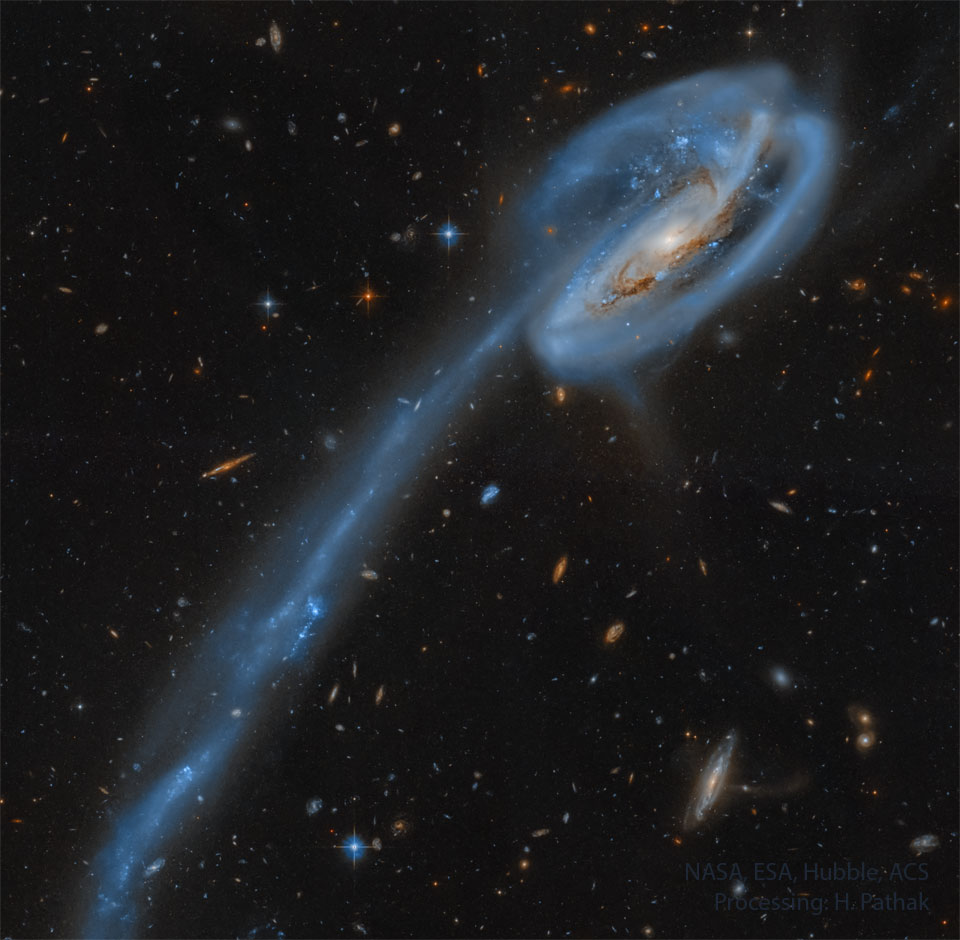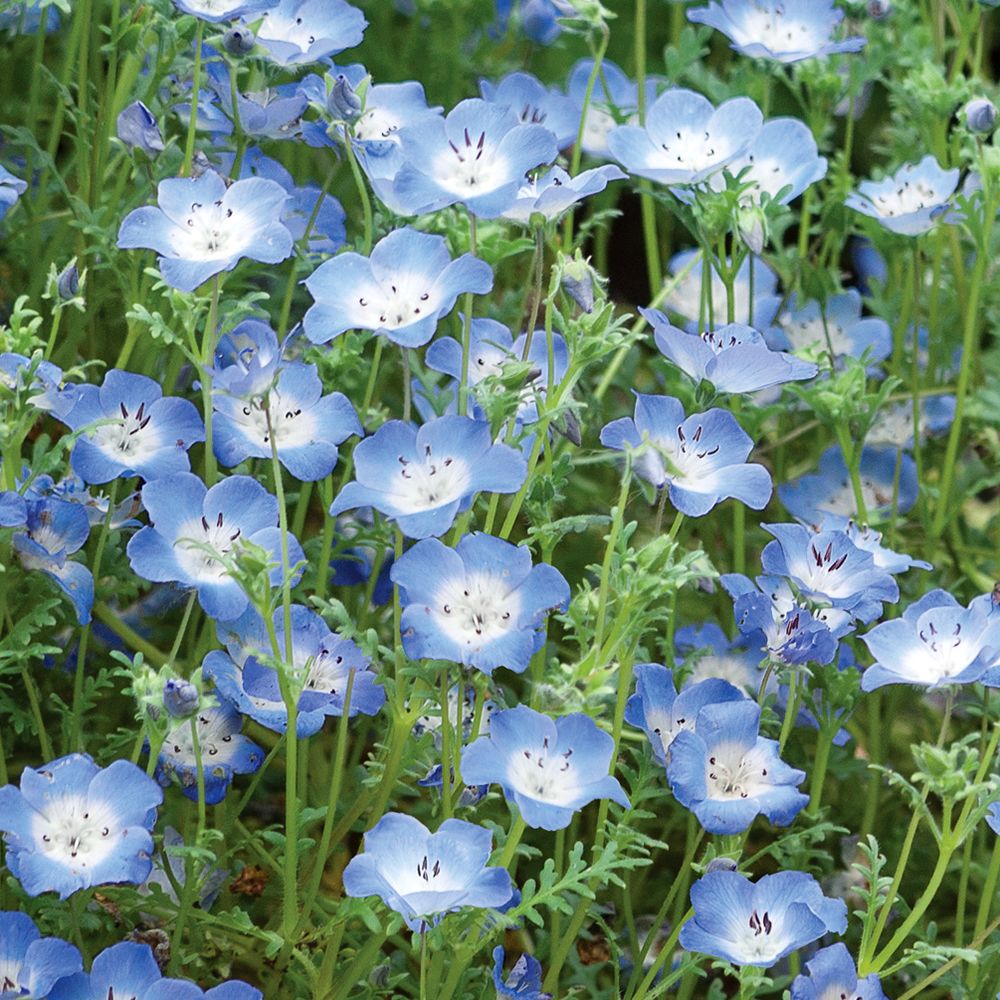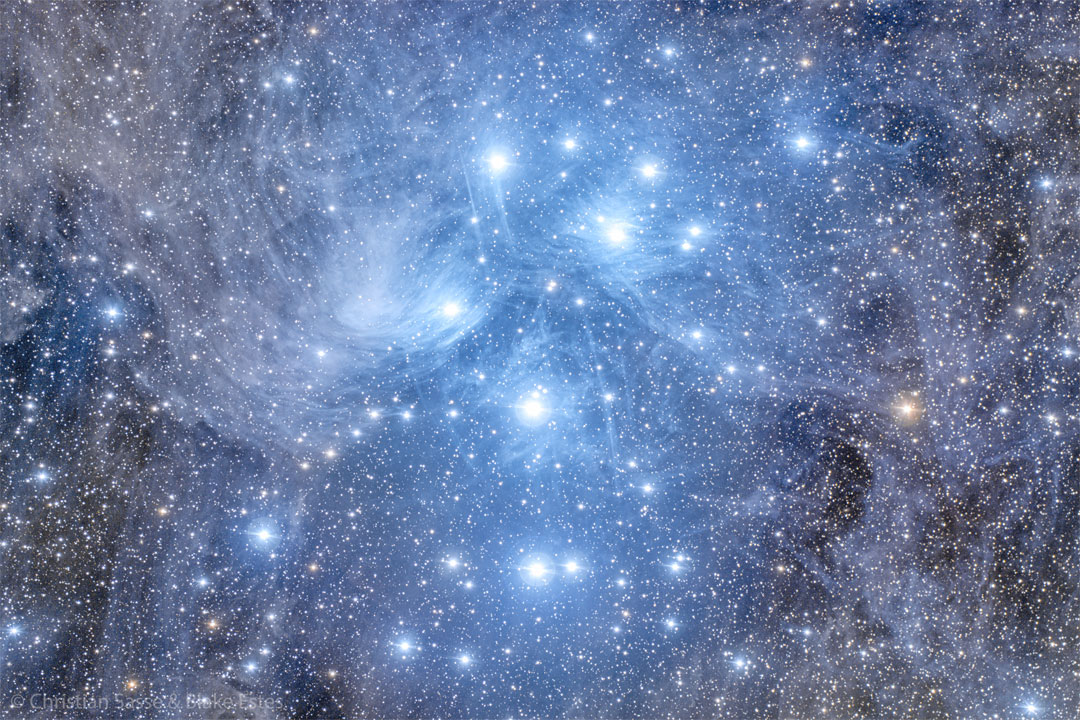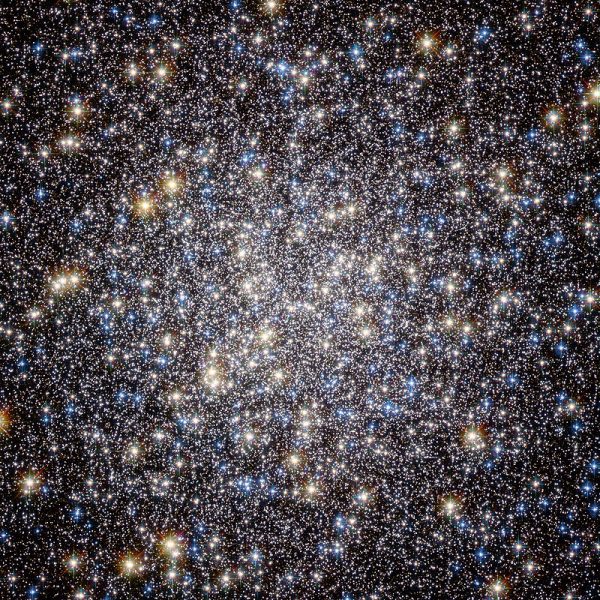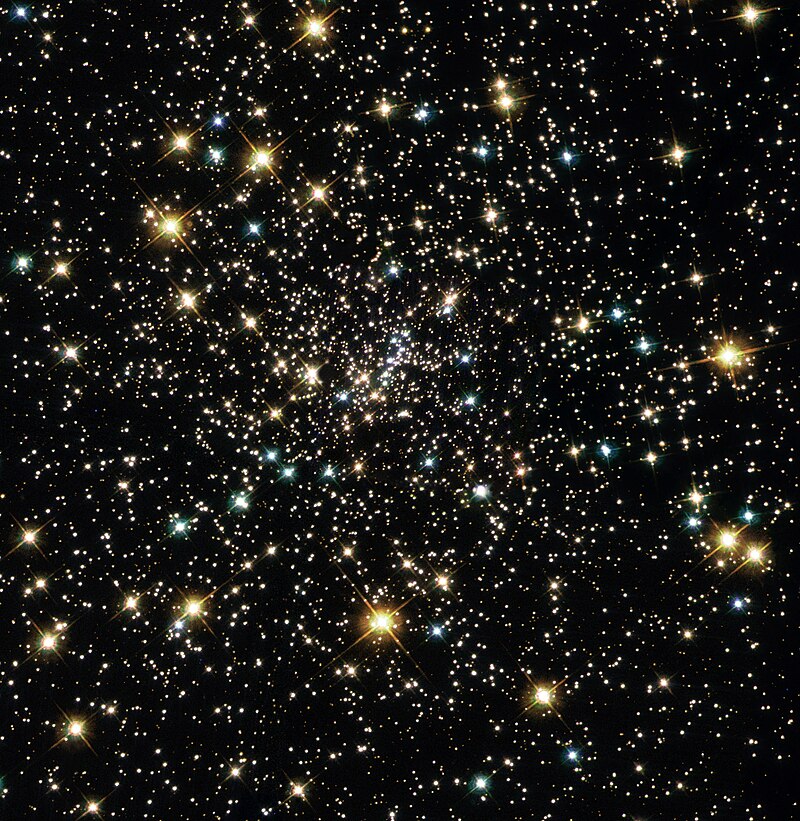I have to talk about the color of this APOD, because I am, after all, the Color Commentator. And the color of this APOD both delights and bothers me.
When I first saw a picture of the Tadpole Galaxy, it looked like the picture at right. The colors were pale. In the APOD, almost all of the Tadpole Galaxy except the very center is so blue that it could have been made of untold quintillions of Nemophila menziesii, Baby blue eyes!
A Blue Universe, full of Baby blue eyes.
Credit: Hiroki Kondo.
Okay, I'll confess: Hiroki Kondo's image of an entire field of Baby blue eyes in bloom is one of the most achingly lovely and beautiful pictures that I have ever seen. But do things ever get that blue out in space? My answer is that it is at least okay to show the Pleiades as that amazingly blue:
So, yes, all the bright stars of the Pleiades are blue, and the nebulosity surrounding them is certainly blue. But a whole galaxy?
A galaxy that, at best, is made up of stars of all spectral classes, and which could be made of late-type yellow and red stars almost exclusively?
Let's look at some different types of stellar populations. Let's look at ancient and metal-poor populations, and old and metal-rich, and intermediately aged and metal-rich:
Let's look at a galaxy with a very interesting post-starburst population:
Stellar populations of NGC 5394. Credit: NOIRLab.
The white arc is a densely populated post-starburst region of aging and cooling stars.
Please click on the picture of NGC 5394 to see the full size of it. Like all at least reasonably big and star-rich galaxies, NGC 5394 has a yellow center made up of predominantly K-type and M-type stars. NGC 5394 also has two elongated arms, which are blue. One of the arms contains very few and small clusters, which suggests that the stars here are typically class A (like Sirius and Vega) rather than spectral class O and B (like the brilliant blue stars in Orion). The other arm contains a few red emission nebulas, which shows that this arm contains some hot bright stars of spectral classes O and B.
But the most interesting thing about NGC 5394 is its brilliantly white stellar "arc" to the upper right of the yellow center. You could argue that this arc is overexposed and that it really contains hot stars of spectral classes O and B, but that does not seem to be the case. NGC 5494 is not very bright in ultraviolet light, which it would be if the stellar arc was made of hot stars. No, this is clearly a still brilliantly bright and densely populated post-starburst area, where the dominant stars are probably spectral classes F and G.
Please note that the stellar arc is smooth. There are no clusters visible here. That in itself suggests that there are no or very few blue stars here, because young blue stars at least of spectral classes O and B are typically found in clusters.
My point? There are few clusters seen in the Tadpole Galaxy. Yes, there are some clusters there, but large parts of the Tadpole Galaxy look smooth. And not only are they smooth, but also bright. High surface brightness, smooth populations of stars are practically never blue. We should not expect such parts of the Tadpole Galaxy to be blue.
And that was my long-winded way of saying that I think that today's APOD is very beautiful in all its blue glory, but I don't find it entirely realistic!
Ann
 The Tadpole Galaxy from Hubble
The Tadpole Galaxy from Hubble

